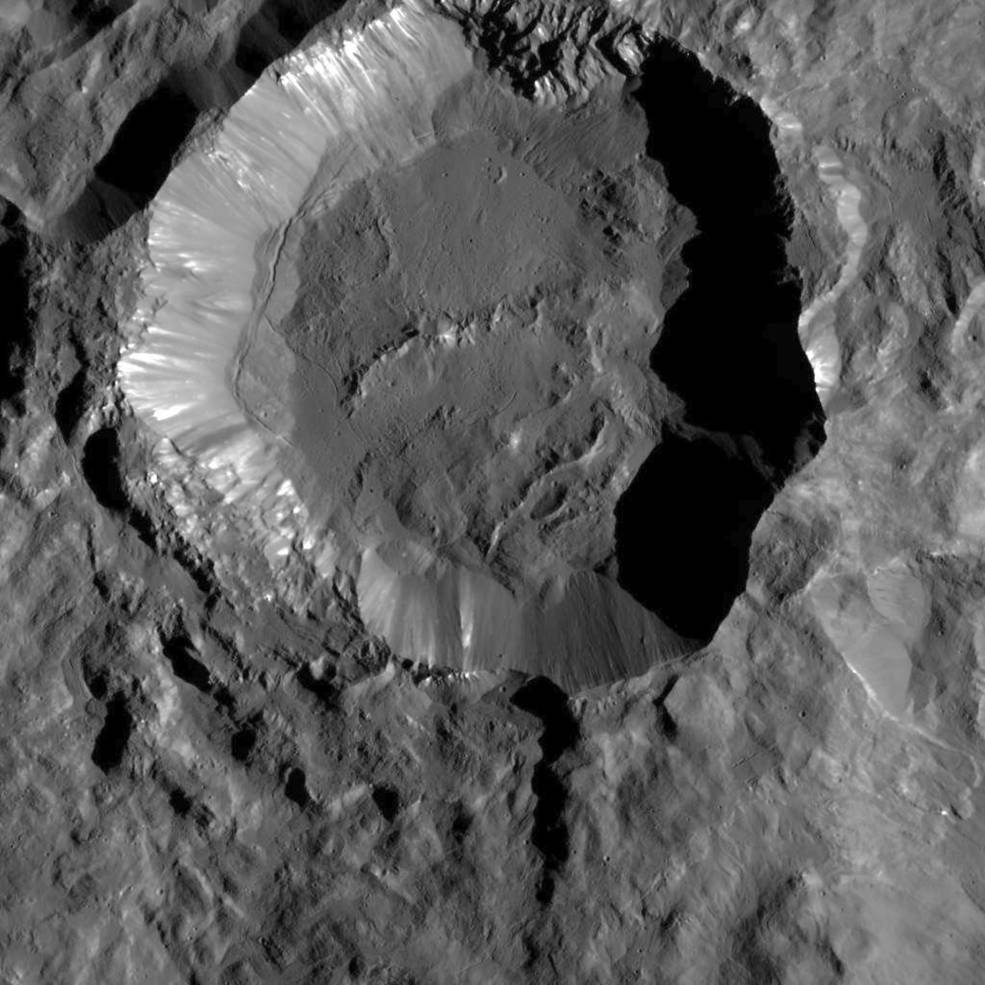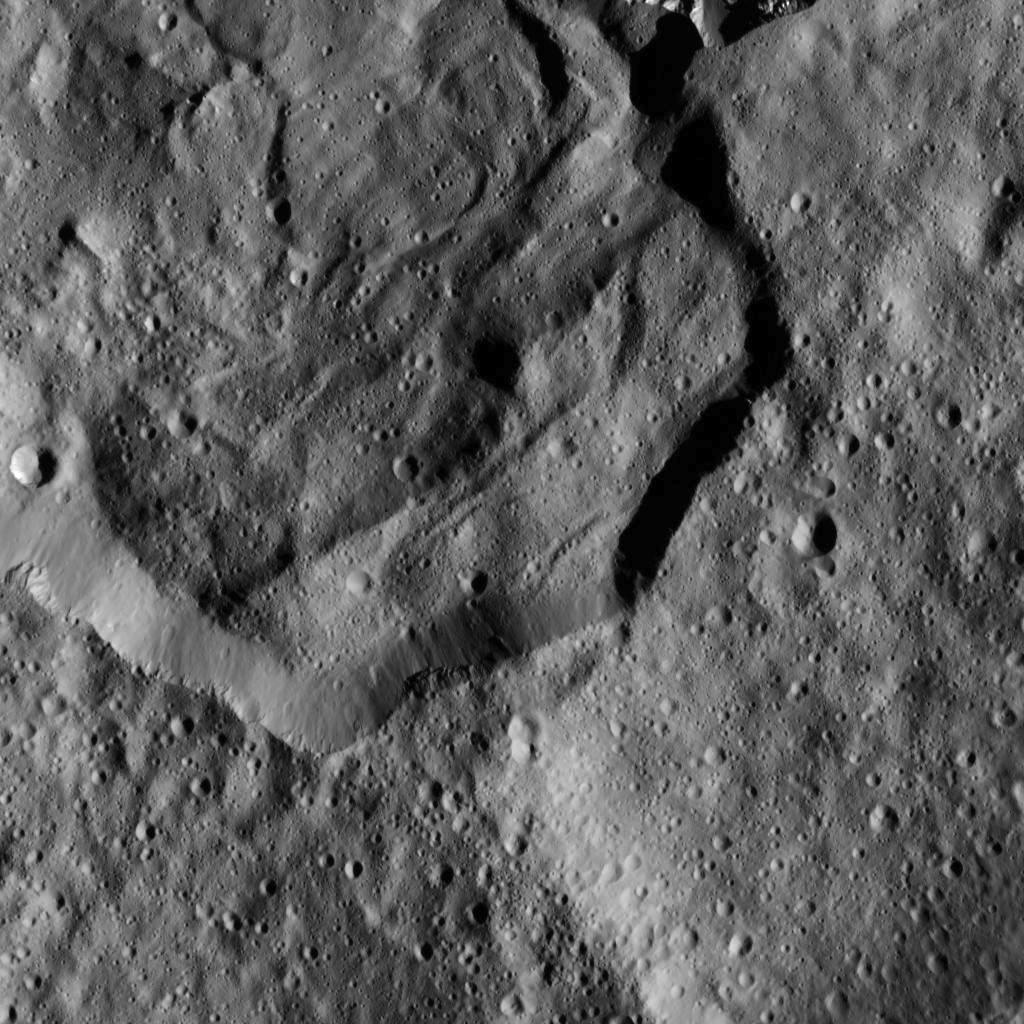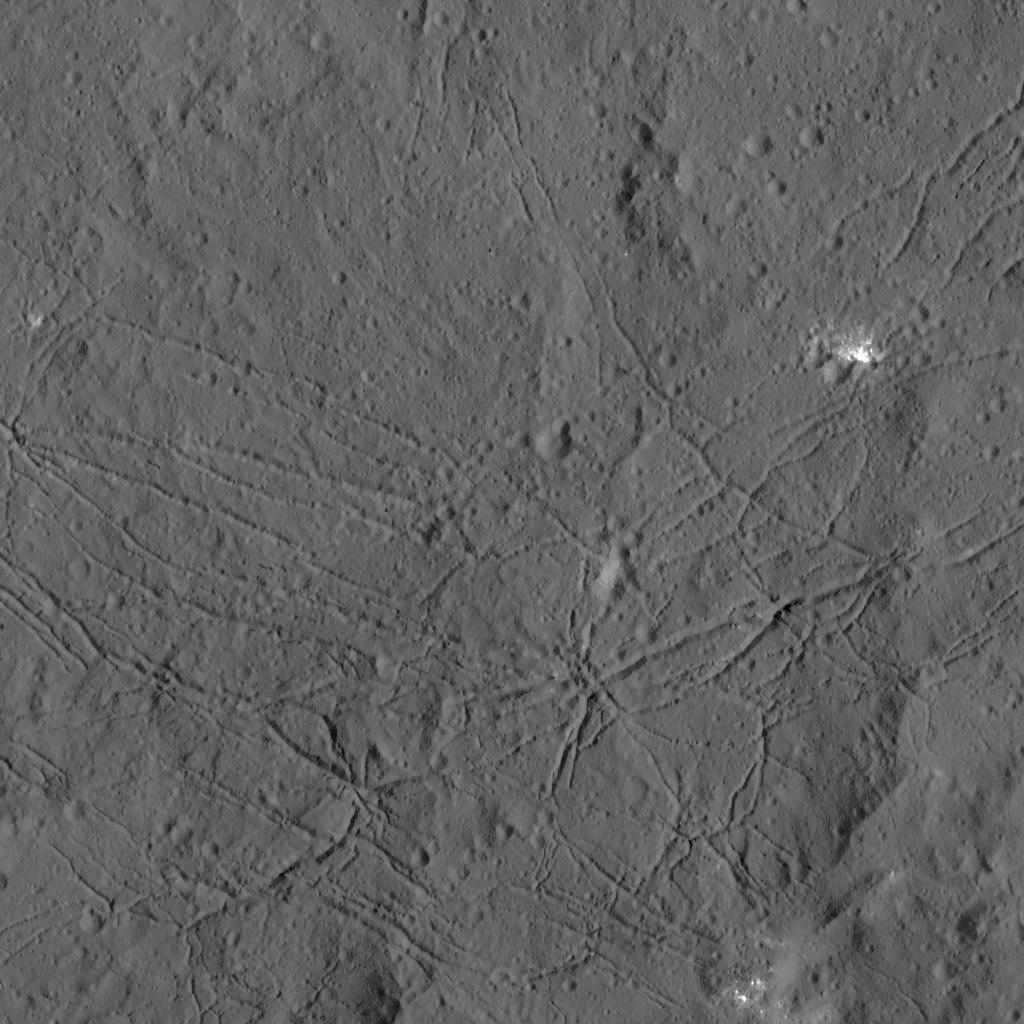
NASA’s Dawn spacecraft has unveiled a new patch of intriguing bright features in the most recent series of striking close-up images taken just after the probe reached the lowest altitude it will ever reach during the mission.
From Dawn’s current altitude of 240 miles (385 kilometers) above Ceres, every image taken from now on of the “unique landforms” will be of the highest resolution attainable since the ship will never swoop down closer to the pockmarked surface for science.
Dawn arrived at this final orbit known as the Low Altitude Mapping Orbit (LAMO) in mid-December.
And the scientists are absolutely gushing over the data as the much sharper new images stream back to Earth.
“Everywhere we look in these new low- altitude observations, we see amazing landforms that speak to the unique character of this most amazing world,” said Chris Russell, principal investigator for the Dawn mission, based at the University of California, Los Angeles, in a statement.
So, as the New Year dawns for Dawn, scientists learned that their hoped for Christmas wish list was overflowing with presents of photos revealing the most exquisite details ever received from dwarf planet Ceres.
Indeed they speculate that the bright features exposed on its rim as seen in the image of Kupalo Crater, shown above, may be salts.
The newly released images from LAMO were taken by Dawn’s Framing camera between Dec. 19 and 23, 2015.
If the bright features are salts, they may originate result from briny mixtures of ice and salts that apparently reside just beneath certain patches of the pockmarked surface and are the leftover residues from water evaporation – like those seen at Occator crater.
So one goal of the team is to determine whether the bright material in Kupalo is at all related to the “bright spots” of Occator Crater.

Scientists believe that Kupalo Crater is one of the youngest craters on Ceres. It is named for the Slavic god of vegetation and harvest.
Kupalo measures about 16 miles (26 kilometers) across and “shows off many fascinating attributes at the high image resolution of 120 feet (35 meters) per pixel. It’s flat floor likely formed from impact melt and debris.”
It is located at the southern mid-latitudes on Ceres.
“This crater and its recently-formed deposits will be a prime target of study for the team as Dawn continues to explore Ceres in its final mapping phase,” said Paul Schenk, a Dawn science team member at the Lunar and Planetary Institute, Houston.
In addition to the Framing camera, Dawn is studying Ceres with its other two instruments; namely the visible and infrared mapping spectrometer (VIR) and the gamma ray and neutron detector (GRaND).
VIR will help identify minerals present on its surface while GRaND gather data on elemental abundances and composition. Together these data will help researchers understand how Ceres evolved of billions of years.

Dawn is Earth’s first probe in human history to explore any dwarf planet, the first to explore Ceres up close and the first to orbit two celestial bodies.
The asteroid Vesta was Dawn’s first orbital target where it conducted extensive observations of the bizarre world for over a year in 2011 and 2012.
The mission is expected to last until at least March 2016, and possibly longer, depending upon fuel reserves.
“When we set sail for Ceres upon completing our Vesta exploration, we expected to be surprised by what we found on our next stop. Ceres did not disappoint,” notes Russell.
Stay tuned here for Ken’s continuing Earth and planetary science and human spaceflight news.
